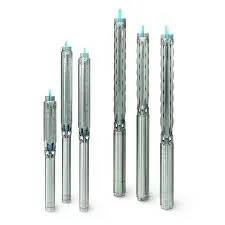Dec . 09, 2024 18:52 Back to list
Guide to Installing Your Submersible Pump for Optimal Performance
How to Set Up a Submersible Pump
Submersible pumps are indispensable tools for a variety of applications, ranging from draining flooded basements to pumping water from wells. Their design allows them to operate underwater without the risk of damage, making them efficient and durable choices for moving water or other liquids. Setting up a submersible pump can seem daunting, but with the right knowledge and tools, anyone can accomplish this task. This article will guide you through the essential steps to set up a submersible pump effectively.
Step 1 Choose the Right Pump
Before you begin the setup process, it's crucial to choose the right submersible pump for your needs. Consider the following factors
- Application Identify whether you need the pump for dewatering, drainage, or transferring water. - Flow Rate Check the flow rate (measured in gallons per minute or GPM) suitable for your application. Make sure your chosen pump can handle the volume of water you intend to move. - Head Height This refers to how high the pump can push the water. Measure the distance from the pump's location to the discharge point to ensure it meets your needs.
Step 2 Gather Required Tools and Materials
Once you have selected the appropriate pump, gather the necessary tools and materials for installation. You will typically need
- A shovel or digging tool - A hose or pipe for discharge - Electrical extension cord (if the pump is not hardwired) - Safety gear (gloves, goggles)
Step 3 Prepare the Installation Site
Identify the location where you will install the submersible pump. If you are setting it up in a well or sump pit, ensure the area is clean and free of debris. If your pump will be installed in a well, make sure it meets local regulations regarding well water pumps. Digging may be required if you need a deeper pit for water extraction, particularly in areas prone to flooding.
Step 4 Submerge the Pump
how to set up submersible pump

Carefully lower the pump into the designated area. Depending on the pump's design, there may be a tether or a cord that you should securely tie to prevent the pump from sinking too deep. Ensure that the pump is upright and positioned correctly for optimal performance. Avoid letting it sit directly on the bottom, as sediment can clog it; use a base or rocks to elevate it slightly.
Step 5 Connect the Discharge Hose or Pipe
Attach the discharge hose or pipe to the pump's outlet. Make sure it is securely fastened to prevent leaks. Route the discharge hose to the designated outlet point, ensuring there are no sharp bends or kinks that could impede water flow. If the distance is great, consider using a larger diameter hose for better flow.
Step 6 Set Up the Power Supply
If your submersible pump is electrically powered, connect it to a power source. Ensure that the power supply meets the voltage requirements of the pump. If using an extension cord, ensure it is rated for outdoor use and can handle the pump's power needs. Avoid using an extension cord for long distances as it may cause voltage drop and reduce the pump's efficiency.
Step 7 Test the Pump
After setting everything up, it's time to test the pump. Turn it on and check for any leaks around the discharge hose and electrical connections. Monitor the pump's performance to ensure it operates efficiently and effectively. If you notice unusual sounds or vibrations, switch it off immediately and inspect for potential issues.
Step 8 Regular Maintenance
Once your pump is successfully set up and operating, regular maintenance is essential to ensure longevity. Clean the pump regularly, check for any blockages in the discharge line, and inspect electrical connections for wear or damage.
Conclusion
Setting up a submersible pump does not have to be an overwhelming task. By choosing the right pump and following these detailed steps carefully, you can ensure an effective installation that will serve your needs for years to come. With proper maintenance and attention, your submersible pump will be a reliable resource for managing water in various applications.
-
Submersible Water Pump: The Efficient 'Power Pioneer' of the Underwater World
NewsJul.01,2025
-
Submersible Pond Pump: The Hidden Guardian of Water Landscape Ecology
NewsJul.01,2025
-
Stainless Well Pump: A Reliable and Durable Pumping Main Force
NewsJul.01,2025
-
Stainless Steel Submersible Pump: An Efficient and Versatile Tool for Underwater Operations
NewsJul.01,2025
-
Deep Well Submersible Pump: An Efficient 'Sucker' of Groundwater Sources
NewsJul.01,2025
-
Deep Water Well Pump: An Efficient 'Sucker' of Groundwater Sources
NewsJul.01,2025
-
 Submersible Water Pump: The Efficient 'Power Pioneer' of the Underwater WorldIn the field of hydraulic equipment, the Submersible Water Pump has become the core equipment for underwater operations and water resource transportation due to its unique design and excellent performance.Detail
Submersible Water Pump: The Efficient 'Power Pioneer' of the Underwater WorldIn the field of hydraulic equipment, the Submersible Water Pump has become the core equipment for underwater operations and water resource transportation due to its unique design and excellent performance.Detail -
 Submersible Pond Pump: The Hidden Guardian of Water Landscape EcologyIn courtyard landscapes, ecological ponds, and even small-scale water conservancy projects, there is a silent yet indispensable equipment - the Submersible Pond Pump.Detail
Submersible Pond Pump: The Hidden Guardian of Water Landscape EcologyIn courtyard landscapes, ecological ponds, and even small-scale water conservancy projects, there is a silent yet indispensable equipment - the Submersible Pond Pump.Detail -
 Stainless Well Pump: A Reliable and Durable Pumping Main ForceIn the field of water resource transportation, Stainless Well Pump has become the core equipment for various pumping scenarios with its excellent performance and reliable quality.Detail
Stainless Well Pump: A Reliable and Durable Pumping Main ForceIn the field of water resource transportation, Stainless Well Pump has become the core equipment for various pumping scenarios with its excellent performance and reliable quality.Detail
